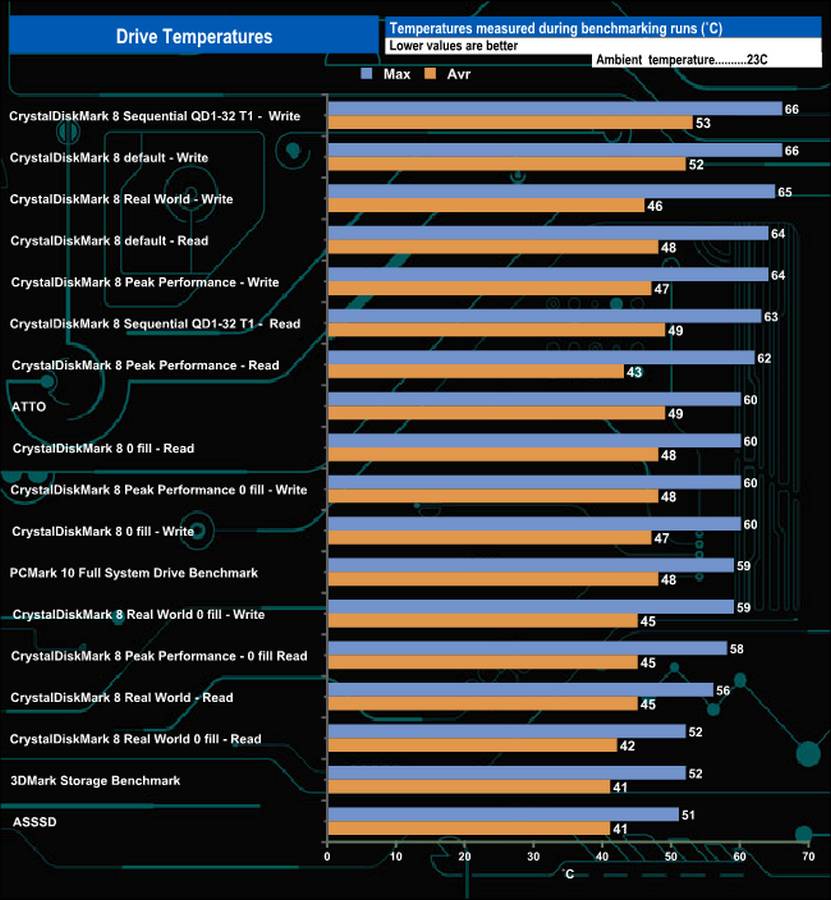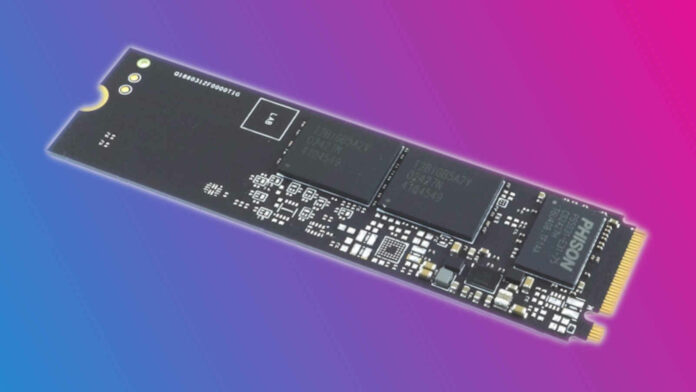Previews for Phison’s new PS5031-E31T SSDs showcase the prowess of its new efficient E31T controller. Although still in the prototype stage, it keeps notoriously toasty Gen 5 drives cool, all while pushing 10GB/s read speeds. Things may change by the time it comes to market, but things look promising for laptops and handheld gaming PCs.
Manufactured using a 7nm process, the E31T controller carries four channels and supports up to 8TB of 3D TLC/QLC NAND. To unleash its performance, it connects to the host machine via a PCIe 5 x4 interface and follows the NVMe 2.0 protocol.
According to Kitguru, who received a unit powered by Kioxia BiCS8 3D TLC NAND clocked at 3,600MT/s, the drive reached 10GB/s in both the sequential read and write tests of CrystalDiskMark. The deep-dive also notes the exceptional 4K QD1 T1 performance, the fastest ever recorded by the team.
Though completely fine for most users, this transfer speed isn’t special by itself. The important take here is the E31T’s efficiency and operating temperature. Installed under the Gigabyte Aorus X670E Xtreme motherboard’s heatsink, the PS5031-E31T stayed cool, maxing out at 66°C during load. This explains why Phison didn’t bother shipping its prototype with any kind of heatsink.

Phison was the first to launch a Gen 5 controller, delivering a noticeable performance jump over Gen 4 drives. Unfortunately, its initial design ran quite hot, requiring active cooling via tiny, whiny fans. Though some brands managed to keep it under control using large passive coolers, their maximum performance generally didn’t reach the Gen 5 theoretical limit. This pushed brands who had the know-how to build their own. For instance, Western Digital has showcased an SSD using its in-house efficient Gen 5 controller.
While not as fast as E26, the new E31T controller is a step in the right direction. Even if the performance doesn’t claim any records, efficiency helps make it far more accessible for slimmer devices. Imagine all the laptops and future Steam Decks that could leverage its higher speed, previously impossible due to the E26’s high heat output.
You can expect the first Gen 5 drivers using this controller to launch early next year. So, hopefully, 2025 will be the year of affordable/usable Gen 5 SSDs.
